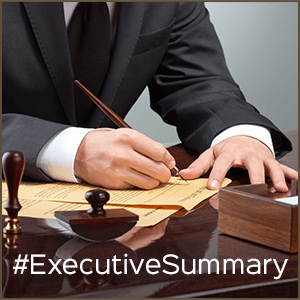Posted on Monday, January 27th, 2014 by Uri Halevi
 The reason for writing a business plan is to secure funding for your new business venture or to help you grow your existing venture. While creating a strong business plan is important to get the funding you’re seeking, the executive summary is what will get your prospective investors to continue reading. The executive summary is what will get your plan and your business noticed.
The reason for writing a business plan is to secure funding for your new business venture or to help you grow your existing venture. While creating a strong business plan is important to get the funding you’re seeking, the executive summary is what will get your prospective investors to continue reading. The executive summary is what will get your plan and your business noticed.
When it comes to your executive summary you need to make it perfect. In essence it is your pitch to potential investors. It is the section of your business plan that introduces you and your business and the product and services that you will be offering your customers. You need to convince your readers that what you are selling is a great idea, and that they would be insane to pass up the opportunity to invest their money in your business.
A standard business plan is fairly straightforward. According to Tim Berry, founder and president of Palo Alto Software, your executive summary should only be a page or two. When writing your executive summary, you want to make sure that the first paragraph includes the name of your business and its location, what products or services you plan to sell, and the purpose of your plan. This paragraph is a simple introduction to your business and what your plan is all about.
The rest of your executive summary is about highlighting the information that is included in the rest of your plan. You need to include the information that you don’t want potential investors to miss. Information such as your projected sales, expected profits, keys to success, unit sales, and profitability. You may want to include highlight charts that show this information, making sure that you explain the numbers thoroughly in the text.
When it comes to the length of your executive summary you don’t want to waste words. According to Businessplanning.org a single page is the perfect length for an executive summary. You need to try to emphasize the main points of your plan as briefly as possible. The purpose of the executive summary is to lure your readers in rather than giving them a detailed description of your business; that is for the rest of your business plan. Try keeping each point to a maximum of three sentences.
A standard executive summary should include a single page of text along with easy-to-skim subsections that highlight your main points with charts and graphics. The graphics should focus on your projected sales, gross margins, and expected profits for the next three to five years. After this information, most executive summaries are followed by the main objectives you have for your business, usually displayed as a bulleted list, your company’s mission statement, and the keys you have for success.
 Your executive summary is the doorway into your business plan. You need to make sure that it is as strong as it can be before you bring your business plan to potential investors. If you are having trouble writing your plan, there are plenty of examples that will help you. The way to ensure you put your best foot forward is to write your executive summary after you’ve written your business plan. This way you’ve already figured out the information that you need to include in your executive summary. By waiting until you finish the plan, writing your executive summary will be quick and easy.
Your executive summary is the doorway into your business plan. You need to make sure that it is as strong as it can be before you bring your business plan to potential investors. If you are having trouble writing your plan, there are plenty of examples that will help you. The way to ensure you put your best foot forward is to write your executive summary after you’ve written your business plan. This way you’ve already figured out the information that you need to include in your executive summary. By waiting until you finish the plan, writing your executive summary will be quick and easy.
More info: Understand your financial future on Planwise.


